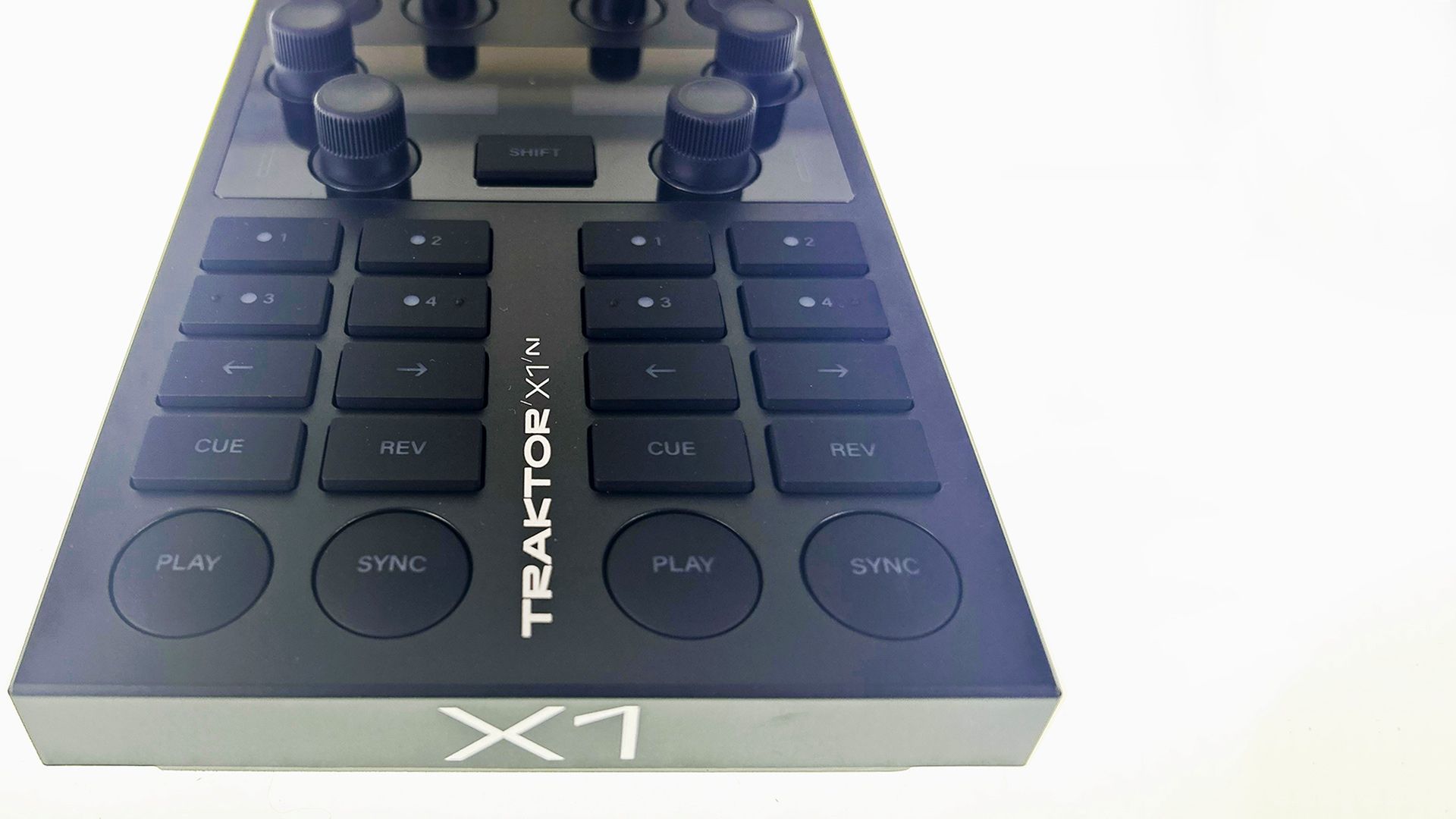This year’s NAMM show saw no shortage of big stories from New Zealand-based Serato, who teamed up with Ortofon to announce a “cartridge of unprecedented specification,” the S-120. The news quickly made its way to the Serato forums, and some users were intrigued by a needle that tracked “to levels never before accomplished” yet promoted minimal record wear, while others pledged steadfast allegiance to their trusty M44-7s and Q.Berts. DJ Tech Tools had the pleasure of testing the S-120 Concorde against Ortofon’s DJ Q.Bert and Digitrack, Shure’s M44-7 and Whitelabel, and Stanton’s Trackmaster V.3 to see which produced the strongest, cleanest control signal in Scratch Live 2.0. Can you guess which cartridges produced which scopes above? Check out the results after the jump.
All cartridges were tested using a three-year-old Technics-1210M5G at a tracking force of 3 grams and tonearm height of 4.5 mm on the B-side of a brand new piece of Scratch Live control vinyl. This experiment was conducted with the mix DJ in mind, so I did not test how well the needle stayed in the groove of the control vinyl during scratching, nor compare record wear over time.
A. Shure Whitelabel
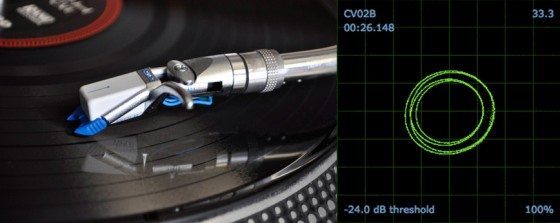
A minority of users of the Serato forums swear by the Shure Whitelabel, so it couldn’t be left out of this roundup. I can’t speak of how it plays on real wax, but its low output leaves much to be desired when used with Scratch Live.
B. Ortofon Digitrack
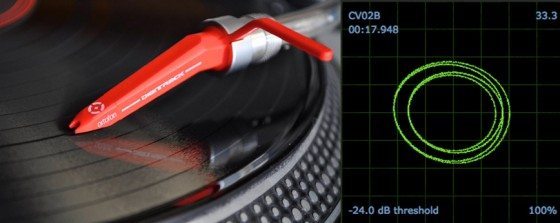
Despite its “made for digital DJs” claim,the Digitrack produced a very weak control signal. Luckily, there are less-pricey Ortofon Concorde cartridges that work better with Scratch Live (see below).
C. Stanton Trackmaster V.3
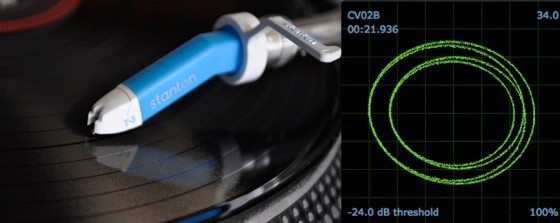
The wildcard of the bunch, this cart produced a surprisingly solid control signal. Considering that its output is lower than that of the Ortofon Digitrack, the control signal produced with the Trackmaster puts it in a league with the best of Shure and Ortofon. On the other hand, at a street price of $149 with no replacement stylus included, even the S-120 is a better deal.
D. Shure M44-7
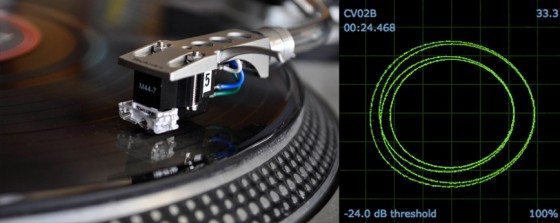
No needle roundup would be complete without the inclusion of this legendary cartridge. The M44-7 was long recommended by the Serato team (prior to the announcement of the S-120) for its “high output volume, excellent tracking, and low record wear.” Of all the scopes illustrated, the one produced by the M44-7 looks the cleanest. A brand-new M44-7 cartridge will set you back only $59; for an extra $20, it’s available pre-mounted to a Technics headshell in case you don’t want to install it yourself. In addition, replacement styli sell for $29, making the Shure M44-7 the best bang for your buck.
E. Ortofon DJ Q.Bert

At the highest output of all the cartridges tested, I’ll admit that I expected the Q.Bert to outshine the S-120 when both tested at a tracking force of 3 grams. While the scope produced by the DJ Q.Bert is slightly wider than that of the M44-7, the left half does looks slightly distorted. If you decide to go with the Q.Bert, avoid the temptation to pick up the twin pack; instead, buy each cartridge separately, as the single packs include an extra stylus that saves you about $50.
F. Ortofon-Serato S-120
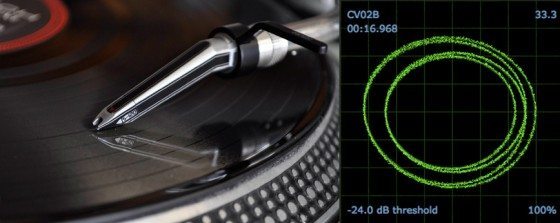
While the S-120 boasts of “an amazing tracking ability of 120um compared to the conventional 80um….a 50% performance improvement on standard DJ cartridge,” what they fail to mention is that the recommended tracking force of the S-120 is 4 grams – 33% more force than the 3 grams that Ortofon typically recommends for other cartridges. I began this test skeptical of its superior performance, but alas, even when I set the tracking force to 3 grams instead of 4, it did produce the loudest control signal (but not by much). However, compare how distorted the scope is compared to those of the DJ Q.Bert and the M44-7. Like the DJ Q.Berts, buying two single packs is a better value than the twin pack, which doesn’t come with replacement styli. Last but not least, did we mention that this cartridge is a beauty to behold?
CONCLUSION
For the Scratch Live user who wants the best value, the Shure M44-7 is a great investment. This cartridge has been the workhorse of some of the world’s very best, yet it’s the most affordable needle reviewed in this article. The most common complaint about the M44-7s is that they have a tendency to gather ‘fluff’ (or dust) if you forget to keep your records clean or brush the stylus.
On the other hand, if you’re a fan of the stylish Ortofon Concorde series, then the S-120 is indeed probably the way to go. While the DJ Q.Bert held its own against the pricier S-120 during this cartridge test, after using both side-by-side during a DJ set over the weekend, I can honestly say that I would have rather had another S-120. After calibrating and setting both cartridges to their recommended tracking forces, the S-120 seemed to stick much better to my control vinyl than the Q.Bert did. If you shave the cost of a replacement stylus off the price of a single pack (as we’ve done below) and compare both cartridges, the S-120 is probably worth the extra $10.



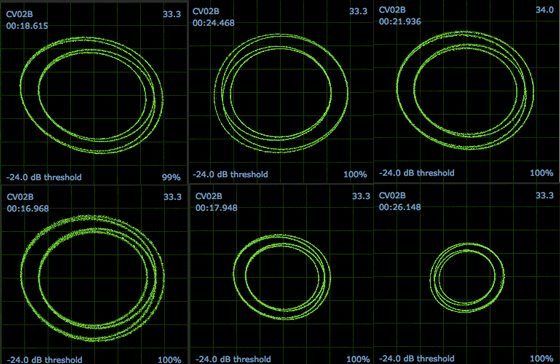
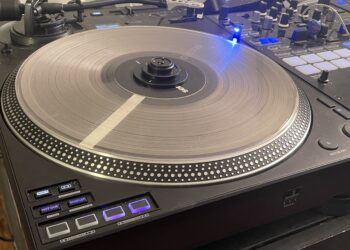
![ROLI’s Seaboard RISE 2: seamless integration into the expressive world of MPE [REVIEW]](https://s11234.pcdn.co/wp-content/uploads/2023/11/Screenshot-2023-11-16-at-5.02.41-pm.png)
